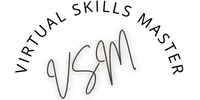Back to: Getting Started with Asana: Organizing Your Work Efficiently
Hello, and welcome to this course on Asana. So in this lesson, we’re gonna go ahead and we’re gonna talk about, getting started in Asana and an introduction to Asana. So what is Asana? Asana is a web based project management and collaboration tool that’s designed to help individuals and teams organize, track, and manage their work efficiently. Asana provides a platform where you can visualize your task, set deadlines, and streamline communication all in one central location.
Its intuitive interface and robust features make it ideal for businesses of all sizes, from small start ups to large enterprises. Whether you’re managing a marketing company, coordinating a product launch, or simply organizing day to day tasks that you do, Asana serves as a hub for improving productivity and ensuring everyone stays aligned. So Asana, some of the key features and their functionality, Asana enables users to create projects, break them down into individual tasks. These tasks can be assigned to team members, if you have them, given due dates, and supplemented with additional details like descriptions, attachments, and subtasks. Asana also offers multiple views for managing tasks, including a list board, or excuse me, a list view, a board, and a calendar view.
And it caters to different team preferences. In addition to task management, Asana also integrates with various tools like Google Drive, Slack, and Microsoft Teams, thus allowing seamless workflow integration and collaboration across platforms. How to use Asana? Asana is used by teams across industries to manage diverse workflows and projects. It’s also used by individuals who are trying to manage different clients and their needs and tasks.
Marketing teams often rely on Asana to plan campaigns, assign roles, track deliverables, and ensuring that projects are executed on time and within a budget. Product development teams use it to manage sprints, track bug fixes, and organize feedback. Even HR departments find value with Asana for onboarding new hires, scheduling par performance reviews, and managing employee engagement initiatives. Its flexibility makes it suitable for virtually any type of project or goal oriented work. One of the primary benefits of using Asana is improved transparency and accountability.
By centralizing the project information, Asana ensures that team members know exactly what’s expected of them and when tasks are due. It reduces the need for constant back and forth communication, minimizing misunderstandings, and missed deadlines. Additionally, its ability to provide real time updates and progress tracking allows managers to identify bottlenecks early and relocate reallocate resources as needed. This leads to increased efficiency, better decision making, and a much more productive work environment. So in all, Asana is more than just a task management tool.
It’s a versatile platform that fosters a collaboration and helps teams and individuals achieve their goals more effectively. By providing a clear structure for managing work, it empowers users to focus on what matters most, delivering results. Whether it’s just you and you’re juggling multiple responsibilities, or if you’re part of a large organization coordinating cross functional teams, Asana is a valuable resource for staying organized, productive, and aligned. So let’s go ahead and set up our account. So you go to asana.com, and you’re going to click on get started.
Now, here, you’re just going to enter your email address. And hit continue. And they emailed me a code. So let me go get that code. Just one moment.
Okay. I have my code, and so let me paste it in. Oops. Okay. Now that I’ve verified my code, I’m going to sign up with my full name.
You can add a profile picture. I’m not gonna do that right now. So continue. What is your role? Now here you’ll check out, you’ll select your correct role for using Asana.
I am business owner. So which describes? You’ll go through and you’ll scroll, and you’ll find the one that you want. I guess I’m going to guess I’m going to put education well, information technology. We’ll start with that one for now.
What do you wanna use Asana for? Strategic planning. I want employee onboarding, project management, and go with that for right now. So I hit continue. What’s something currently that you and your team are working on?
Marketing plan. So let’s go ahead and continue. What are a few tasks that you have to do for the marketing pan plan? Draft emails, schedule social media, and create product. So let’s go ahead and hit continue.
What stages would, how would you like these groups into sections or stages? So these can either go into to do, doing, or done. Since none of this has been done, we’re gonna leave it as to do. Hit continue. Now, this is a personal preference.
The layout that works best for your project is something you can decide. My preference is I like to see everything in a list. You can also view things on a board layout. You have the timeline layout, and then you have the calendar layout. Now, I use this with clients on myself, and most of my clients choose either the list view or the calendar view.
I personally like the list view, so I’m gonna stick with it. Hit continue. And then, you can invite team members. So, I’m going to invite support at Virtual Skills Master and Erin at Virtual Skills Master. So, I’m going to go ahead and hit continue.
This will generate and send them emails so that they can accept the invitation. So right now, we’ve created kind of our basic first project, which is marketing plan. And so in a moment, we’re gonna go through in the next lesson, and we’ll talk more about the sidebars, the top bar, and how to navigate in Asana.
